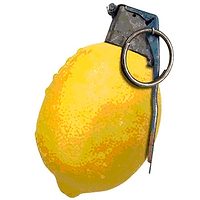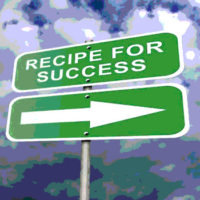Is That a Beet or a Banana? Unwrapping Food Fraud in the Produce Industry

It is hard to make a banana look like a beet! For that matter, try to make bananas Foster with a beet, and you will end up with a dessert that resembles a horror movie prop instead of the dessert with a claim to fame. It’s clear that fraud in the produce industry is not as easy as swapping out the banana for the beet, but there are opportunities for fraud that must be recognized and guarded against.
“Food fraud is a collective term used to encompass the deliberate and intentional substitution, addition, tampering, or misrepresentation of food, food ingredients, or food packaging; or false or misleading statements made about a product, for economic gain. Food fraud is a broader term than either the economically motivated adulteration (EMA) defined by the [U.S.] Food and Drug Administration (FDA) or the more specific general concept of food counterfeiting. Food fraud may not include ‘adulteration’ or ‘misbranding,’ as defined in the [Federal] Food, Drug, and Cosmetic Act, when it involves acts such as tax-avoidance and smuggling. The economic motivation behind food fraud is distinctly different from those for food safety, food defense, and food quality. The cause of an event might be food fraud, but if a public health threat becomes involved, the effect is an adulterated product and a food safety incident. All of this is under the umbrella of food protection, which encompasses food fraud, food quality, food safety, and food defense.”[1]
Increased costs and margin squeeze have increased the incentive. Farmers are always asked to reduce costs and assume more risk. Shippers and wholesalers are always asked to reduce their price to the retail segment. Fuel, climate, food safety, labor, market demand, and supply constraints add further margin pressures. Each one of these factors can devastate a supplier and drive them to consider alternative ways to keep the margin healthy. Every year, buyers ask for a lower cost. Where is the breaking point between true cost savings and sacrificing quality, safety, and ultimately integrity to make a buck? It’s not difficult to see how the drive to stay in business or profit from trends can drive one to suspicious behavior.
Add to this challenge that our supply chain to the U.S. market for fruits and vegetables is global. North America, Central America, South America, Europe, Asia, Australia, and New Zealand—the supply chain is huge to satisfy the consumer’s demand for seasonal fruits and vegetables to be available year-round. This is what consumers are demanding. This is what retailers are looking to achieve. Consumers often judge a retailer by their produce department. They believe that if the produce is fresh, abundant, and of high quality, the store is better, and they will spend their dollars there. How can retailers keep up with the demand, keep prices affordable, and ensure the right product is on the shelf when the customer wants it? They push their suppliers to be sure they have it, at the right price, quality, and origin. If every year the request is the same, at some point, the supplier must decide to maintain integrity or sacrifice losing business; what a difficult decision!
Organic
Organic food has taken hold in the U.S. and the EU. Market penetration of organic produce is relevant and holds the highest stake in the U.S. market among food segments. The price premium between organic and conventional can be as much as 15–20 percent. In the field, certified organic produce has federally regulated requirements that add additional costs and create a level playing field among organic producers. Growing produce without the aid of synthetic pesticides and fertilizers takes years to master and, even with extensive knowledge, is at the mercy of the weather.
There are several areas that can be influenced by the lure of the price premium versus conventionally grown produce. It starts in the field. The organic grower could certainly cheat on the inputs he or she may be using to maintain the crop. Using nonorganic inputs to help prevent pests or disease will certainly help a grower’s yield and profit. Certainly, being in the market when others are not due to diseases or insects will allow that grower to increase their price due to demand.
The very fact that there is a price premium adds incentive to food fraud. Often, fruits and vegetables will come out of the field with little identification of their origin or cultivation methods. Identification is often applied upon receipt at a packing shed. Tree fruits like apples are identified with a PLU sticker that allows the retailer to appropriately charge for the right product. If a shipper is overloaded with conventional product in a down market and the organic market is up and flourishing, is there a possibility of repacking that product into an organic box or applying an organic sticker to move their excess product and receive a premium for doing so? This scenario can easily be played out in a farmers market, where there is less scrutiny by the buyer and the ability to cheat an unsuspecting consumer.
Produce as an Ingredient
When produce is processed and used as an ingredient, the ability to substitute ingredients becomes more likely. Flavors or colors can be added to help hide the ingredient’s original form. The substituted product can be used to increase the yield of a product and reduce costs. Or there could be a complete substitution for the more expensive ingredient. This scenario has played out in the juice industry with the introduction of pomegranate juice to the U.S. market. POM Wonderful introduced pomegranate juice to the U.S. with huge success. The nutritional value coupled with the uniqueness of the product made it an overnight success. Then, when Oprah Winfrey told the world that she loved a good pomegranate martini, the market exploded. As result, the rush for companies to get into the space with their own brands of pomegranate juice took off. The U.S. supply was limited and controlled by POM Wonderful, which meant companies had to source their product from overseas. The demand outpaced the supply, and those suppliers thought they could substitute other juices to meet the demand. They would add grape juice to pomegranate juice to make it more available. Juice authenticity tests soon revealed the fraud, and many companies went out of business as a result. Most probably never saw it coming. They thought they could trust their suppliers and that when they bought pomegranate juice, they would receive just that. Little did they know that they were committing fraud themselves by calling it pomegranate juice when it was really a blend of pomegranate and something else like grape juice.
Analytical Fraud
More and more, companies are requiring certificates of analysis (COAs) for their inbound supply. They want to know if the product is free of contamination from pathogens, free of illegal or unauthorized pesticides or fertilizers, and has enough of something to make a health claim or be what it claims to be. The tests are frequently performed and reported by a third-party testing laboratory. These programs are often well controlled, and buyers verify COA results with their own testing before they gain confidence in their supplier. However, for cost reasons, they will often stop this verification testing once they have established trust. This is when the opportunity to commit analytical fraud is at its peak. The supplier can falsify COAs to tell the customer everything is OK. The people managing this program have little to no ability to determine the legitimacy of the document, interpret results, or question the integrity of a supplier. They are asked to be sure the COA has been received prior to receiving the inbound product. The employee is going through the motions at this point: “Has the COA been received for this load and meets requirements?” They check the box and move on to the next truckload.
Designation of Origin
Country of origin is important to many consumers. They want to know that the produce they are buying or consuming comes from a certain place, or not from a certain place. There are consumers who want only products grown in the U.S. There are consumers from other countries who are looking to taste the fruit or special flavors of their home countries. FDA will occasionally advise consumers not to consume product from a certain country or region for health reasons. How can we, as consumers, be sure that the placard designating the country of origin is truly correct? Before your local produce monger makes that designation, there may be several handlers along the way who also need to make that designation. A farmer must first properly designate the farm location. Sometimes that product will then be packed at the handler/shipper location. In the case of tomatoes or peppers, they may then get another repack before making it to the produce department. Each step in the supply chain is another opportunity for fraud.
Origin may also refer to a specific area on a farm or from one farmer’s piece of land but not the other under the same banner or brand. In the leafy greens industry, the Leafy Greens Marketing Agreement (www.lgma.ca.gov; a voluntary program designed to provide measurable food safety controls on the farm) requires preseason assessments to identify risk and mitigation if necessary. Areas on the farm, or an entire farm, may be restricted to growing specific crops during that season. Sometimes everything can be going fine and then animal intrusion may be discovered, which prohibits the use of the crop for its intended purpose. Farmers operate on thin margins, and not getting paid for something that may be a risk could lead to poor decisions. While one could argue that this is a decision based on risk and would not constitute fraud, someone made a determination that the product was at risk and potentially adulterated; moving this product to another customer without fully communicating the risk is fraud and criminal in a couple of ways.
Inputs in the Field
The use of pesticides and fertilizers is a highly regulated aspect of agriculture among industrialized nations: what is applied, how much is applied, and when it is regulated, monitored, and audited against to ensure compliance so that trade can be open among nations. Over time, our understanding of an input can change. What was considered safe in the past is now known to cause cancer, for example. Chemical companies don’t make anything in small amounts, so when a government decides an input is no longer allowed, a company may be stuck with a huge inventory. Disposal of these products could be extremely expensive. Multinational chemical manufacturers will sometimes move a prohibitive substance from one country to another country where it may not be prohibited. Products grown in these countries may be sold back to the countries in which the substances were prohibited. If there is not transparency in the supply chain and a true understanding of your supplier, fraud can occur.
Trust but Verify
There is clearly an opportunity for fraud in the produce industry. No segment is exempt from the possibility. Fortunately, the industry is made of upstanding individuals who most likely would not think of committing fraud. Unfortunately, our system of driving price out of the supply chain has its limitations. At some point, there is no more money to take out of the system and something must give: lose business or figure out another way. How does a buyer know when they have reached that point? Herein lies the issue.
Price is critical to success in the U.S. retail market. In the end, people are looking for value. Most consumers have no idea of how much work goes into getting a head of lettuce to the market or restaurant. In the U.S., subsidies have also created an unrealistic value around food. The government has subsidized growers to make sure prices are low. Couple this with low-cost migrant labor and the value of our food in the U.S. market is upside down. Buyers know this and are incentivized to bring in the lowest-cost product so that they can, in turn, offer the lowest price to their consumers. As mentioned, this has a diminishing rate of return. At some point, the supplier has no more to offer for price reduction and must look at reducing profit or finding another way. Fraud, specifically EMA, is that way.
To prevent this, we must truly have a relationship with our supply base. We need to know where there is opportunity to reduce costs and when a supplier has given all they can. This can’t happen with an audit, a phone call, or a COA. It takes time. Time to visit the farm or packinghouse. Time with suppliers to understand their challenges and concerns. Time to understand where their breaking point may be. Time to listen and understand. This may sound a bit soft and fluffy, but it’s true. As we become more distant from one another with our technology, we must look to break that trend and reconnect with our supply base.
Government intervention usually comes too late to stop fraud. That leaves a large number of consumers victimized and exposes food companies and their supply chain partners to the significant fallout from discovery. Therefore, we in the industry must take it upon ourselves to ensure that our supply chain is sound. It’s the best defense against food fraud we could have.
Will Daniels is president of the produce division at IEH Laboratories & Consulting Group and a member of the Editorial Advisory Board of Food Safety Magazine.
Reference
1. “Defining the Public Health Threat of Food Fraud,” John Spink and Douglas C. Moyer, Anti-Counterfeiting and Product Protection Program, Michigan State University, April 30, 2011.
Looking for a reprint of this article?
From high-res PDFs to custom plaques, order your copy today!






